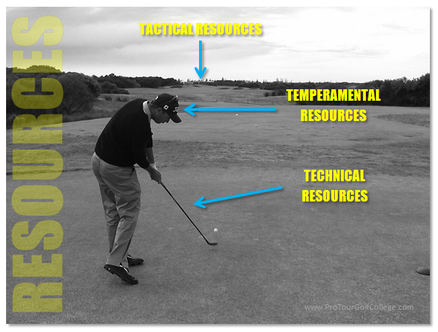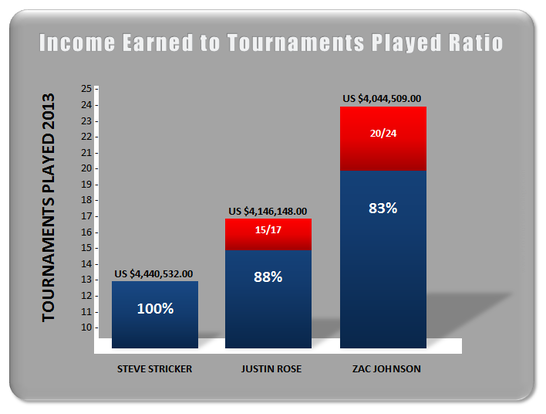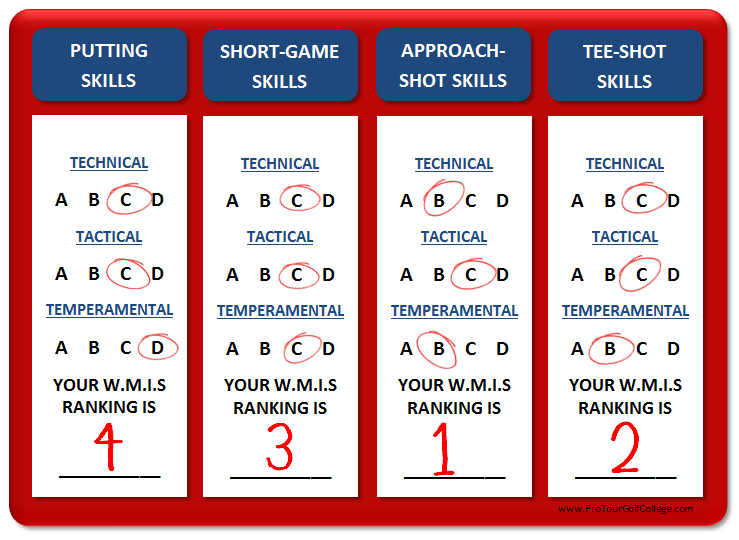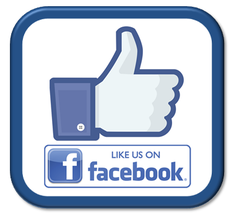|
Imagine 100 exceptionally skilled and ambitious male and female professional golfers from around the globe fresh from successfully graduating tour school and starting out on their first year on tour. Now if I asked you how many of them you think would still be competing on tour 10 years from today what would your answer be?... I asked one of our professional tour clients Steven Jeffress (on tour for 15 years) who plays on the Japan Tour his estimation of the percentage of golfers that would still be playing on tour in 10 years and he said without hesitation that "90 to 95 percent of those 100 golfers would not be playing on tour in 10 years." "90 to 95 percent of those 100 golfers would not be playing on tour in 10 years!" And you know what? He’s right; most of those exceptionally skilled male and female golfers will have given up on their dream of becoming a successful tour player well before their 10 year mark on tour. Why is this the case? Here are some of the reasons. For the majority of them they realize that the grind of tour life (travelling, away from home, the financial investment) is not for them and they decide to settle down, find a steady job and possibly start a family. Others simply don’t play well enough to stay on tour as they soon discover that it costs a lot of money to pursue their career choice and because they don’t perform consistently well enough on tour they run out of funds enough times that eventually they go and do something that's less stressful. Still another percentage of the 100 will stick at it for a while longer making enough checks to get by, but never really breaking through to earn the big checks that will change their life. Eventually they also give up because they start to believe that they don't have what it takes anymore to make it on tour. And then finally there’s the few who stay on tour and realize their dream of playing successfully on a pro tour and are reaping the rewards of their commitment to the journey.  Building Competitive Advantage So how do this last group of the 100 do it? They do it by building competitive advantage into their game that allows them to become a competitive force on tour. The following quote is the most accurate description I have found that aptly describes competitive advantage for golfers on a professional golf tour. “The term competitive advantage is the ability gained through attributes and resources to perform at a higher level than others in the same industry or market.” With so many professional golfers never realizing their dream of a successful life on tour, and who never reap the benefits of their hard work and commitment, this quote is very helpful and insightful for those that are on tour now, or are contemplating it. So let's look at it a little closer at what it means. Basically this quote describes the two essential elements in the formula - attributes and resources which are the elements you need to help you to build competitive advantage in your game. What Attributes and Resources Do You Need? In our last article I described the 4 key mental attributes that keep you playing golf on tour for the long-term, and if you are to build sustainable competitive advantage for the tour you will need the resources to be able to identify, isolate and improve the golf skills and routines that increase your ability to produce a low golf score average over a season. With about 156 golfers in the field each week competing for the prize money on offer, golfers who have developed a sustainable competitive advantage on their respective professional tour are those that primarily do 2 things really well;
Many Ways to Learn But Fewer Ways to Earn We want you to understand that your primary goal for each season is to develop your competitive advantage by making more cuts over a season than less with a steady style game. Every bit of effort you invest into your game both on and off the tour is to achieve this end because the golfers who have been able to stay on tour the longest are the same golfers who year-in-and-year-out make the highest percentage of cuts. About 45 percent of the field each week (about 70 golfers plus ties) will make the cut each week and out of the 70 or so golfers who play day 3 and 4, those that finish in the top 20 percent of the field will earn most of the prize money available for that tournament. Once you get outside of the top 15 to 20 golfers the prize money thins out dramatically. So the big question to ask yourself is "what are the resources that would help me to lower my tournament score average - particularly on day 1 and 2 so I can make more cuts over a season and earn more income?" In-fact it’s the only question that you should continually ask yourself if you want to develop a sustainable competitive advantage on a professional golf tour.  So What Exactly is a Resource? A resource in the context of golf improvement and sustainable competitive advantage is any technology, methodology or strategy that you use to influence your skills to meet your goals. Simply put, it is a vehicle for driving your golf scores down and keeping them there. The three primary resources (we call 'T' resources) that will influence improvement in your golf skills and performances on the golf course are:
 Your Weakest-Most Important Skills (W.M.I.S) Ranking Procedure You need to sit down with your golf instructor, coach or caddy to carefully evaluate your performances on the golf course in the 4 primary performance categories.
You need to determine your current standards in these 4 basic areas of the game to start with before you decide which specific resources you will need to positively influence your performances on the golf course. The resources you ultimately choose will help you to make more cuts than you miss, and make more money than you spend. Step 1. Your first task is to download our W.M.I.S Golf Skill Assessment sheet (below) so you can identify and isolate your weakest-most important golf performance category (that houses the sub-category of golf skills) that keeps your tournament score average high, making it harder for you to make the cuts in tournaments.
The 4 Primary Performance Categories Are: 1. Shots played on the greens (Your putting ability) 2. Shots played within 90 metres or 100 yards of the green (Your short-game ability) 3. Approach shots into the green from outside 90 metres or 100 yards (Your shot-making ability) 4. Tee shots (Your driving ability) So let's start and like I said with the help of your instructor or someone who is very familiar with your game like a caddy give yourself an honest and realistic grading by circling A, B, C or D on your assessment sheet in each of the 4 primary golf performance categories of putting skills, short-game skills, approach shot skills and driving skills which have been broken up into the 3 primary resources of technical competence, tactical competence and temperamental competence: The 3 Primary Resources Are:
Each grade A, B, C or D also has a numerical value associated with it that relates specifically to your knowledge of how to execute the skills within the category, and also your ability to execute these skills under pressure. Step 2. So give yourself an honest and realistic rating based on the following: A = 75 to 100 percent (Very knowledgeable in it and can perform it anytime under pressure) B = 50 to 75 percent (Somewhat knowledgeable and can perform it most of the time under pressure) C = 25 to 50 percent (Lack knowledge in it and mostly fail to perform it under pressure) D = 0 to 25 percent (No knowledge in it and can't perform it under any pressure) Now that you have identified the weakest to strongest golf performance primary categories you will need to rank them from your weakest - most important golf performance category to your strongest. Place a number from 1 to 4 under the primary performance category that when this category is improved it will have the most positive effect on improving your golf score average in tournaments. The thing to understand here is that your techniques, tactics and temperament are inextricably linked in the golf performance equation and being weak in any one area will have an influence on another. Once you have completed the first part of the assessment it will look similar to ours and you will have completed the first step in identifying and isolating the primary performance categories that house the skills that are keeping you from building sustainable competitive advantage on tour. Now within these 4 primary performance categories are the sub skill categories that house the specific skills like putts made from 5 feet, or proximity to the hole from 65 yards etc. that you must constantly track, test, measure and manage to determine specifically where you should aim your focus and energy to upgrade them.
Comments are closed.
|
Archives
June 2019
|
||||||||||||
Proudly Supported By
Copyright © 2011 - 2018 Pro Tour Golf College
Website Managed By Golf Performance Media
All Rights Reserved
Website Managed By Golf Performance Media
All Rights Reserved









 RSS Feed
RSS Feed



